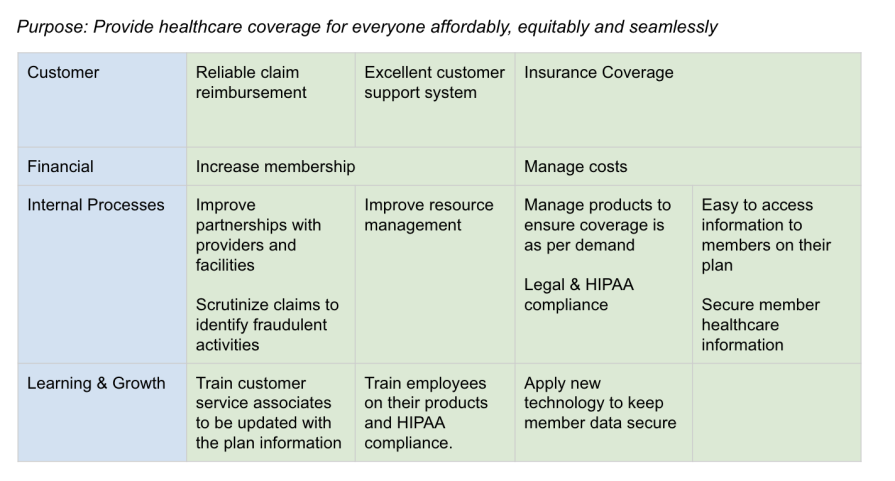As a product manager, you have to navigate increasingly complex environments and planning for your organization’s future can be chaotic. Without a clear strategy for the future, you’ll struggle to meet your goals. This is where strategy maps come in handy for planning, performance monitoring, and fostering a shared understanding of goals.

The idea behind strategy maps originated in the 1990s from Robert S. Kaplan and David P. Norton’s “The Balanced Scorecard.” They wanted to create a way for people to translate their vision and strategy into action objectives and performance measures by demonstrating cause-and-effect relationships between objectives.
This article provides an overview of strategy maps, including what they are, how to create them, and real-world examples.
A strategy map is a tool that illustrates an organization’s strategic objectives and the relationship between them using a visual diagram. It provides clarity to stakeholders on how various goals contribute towards achieving the overall strategic objective. Strategy maps are powerful tools that help you communicate your vision, align your efforts, track performance and achieve your goals effectively.
Strategy maps can be organized into four categories. These include:
The following steps outline how you can go about successfully creating a strategy map:
Below you can see an example of a strategy map from a healthcare insurance organization. The healthcare insurance organization provides coverage to those who have bought health insurance plans either directly or through their employees:

At the top is its mission statement, which is to provide healthcare coverage to everyone affordably, equitably and seamlessly. Customers need to receive the coverage they need when they visit a doctor and have claims processed seamlessly. Also, if they have questions, they should be able to easily get hold of customer service who can answer their queries.
From a financial perspective, the organization has to increase memberships to get more revenue and manage costs of operation on the other hand to maximize its profit.
The organization needs to have a long term partnership with facilities and providers to provide a good coverage network for its members. It’s also crucial for this organization to update its health insurance plans with appropriate network coverage and benefits to remain attractive to members.
From a learning and growth perspective, this organization needs to train its customer service associates so they can provide information to members for any queries, as well as invest in newer technology to ensure the security of the application is robust enough to avoid hacking of personal and healthcare information of its members.
The customer, financial, internal processes, learning and growth goals differ but depend upon each other. Unless you identify the area where improvement is needed, and plan to improve it, it’s not possible to achieve the overall objective of the organization.
As you learned from the example, strategy maps provide a lot of benefits for a PM. At a high-level, the biggest ones include:
Strategy maps are a powerful tool to help you align your strategic objectives and communicate your vision effectively within your organization. They help facilitate a deeper understanding of various initiatives by illustrating the cause-and-effect relationships between different goals.
To take full advantage of strategy maps, it’s important to define objectives clearly, involve key stakeholders in the strategy map creation process, and regularly review the strategy map to reflect the dynamic circumstances. A well constructed strategy map can provide clarity on priorities and foster collaboration across departments leading to improved performance and strategic alignment.
Featured image source: IconScout

LogRocket identifies friction points in the user experience so you can make informed decisions about product and design changes that must happen to hit your goals.
With LogRocket, you can understand the scope of the issues affecting your product and prioritize the changes that need to be made. LogRocket simplifies workflows by allowing Engineering, Product, UX, and Design teams to work from the same data as you, eliminating any confusion about what needs to be done.
Get your teams on the same page — try LogRocket today.

Most teams fail at autonomy. Learn how clear rules help product teams move faster without micromanagement.

A practical framework for PMs to use AI in ideation without sacrificing judgment, strategy, or decision quality.

A practical five minute revenue estimation method to help product managers compare ideas, drop low impact features, and prioritize smarter.

A practical guide for PMs who want to stop being bottlenecks, delegate smarter, and lead teams effectively with a clear ownership framework.